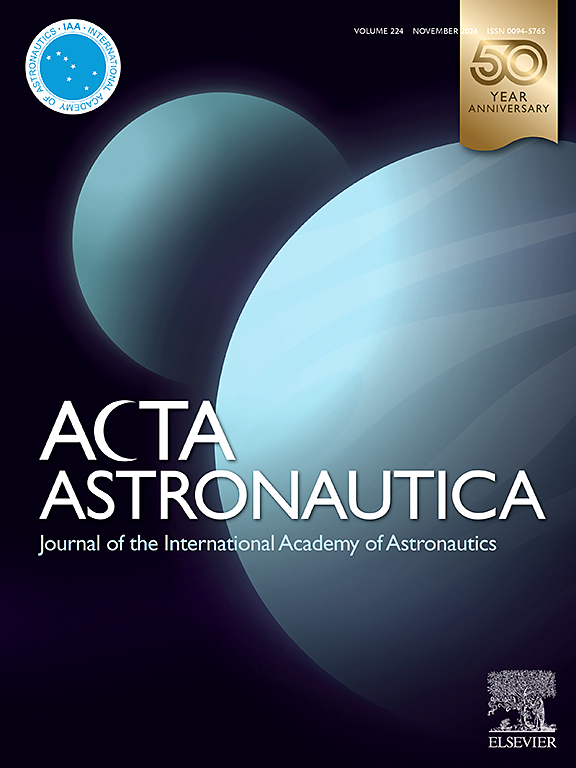Orbit design for the Millimetron space observatory
IF 3.1
2区 物理与天体物理
Q1 ENGINEERING, AEROSPACE
引用次数: 0
Abstract
Millimetron is a space observatory for millimeter and sub-millimeter observations planned for launch around 2030. The 10-meter diameter space unfolded telescope will be cooled down to 10 K and operated in the vicinity of Lagrange point L2. Mission lifetime is 10 years and it includes astronomical observations in two modes: as a space-ground interferometer and as a single-dish telescope. This paper presents the results of the Millimetron space observatory orbit design that takes into account technical and scientific requirements and constraints. It covers the computation of suitable operational orbits, the selection of an orbit, and the transfer from Earth. Furthermore, scientific objectives are demonstrated through VLBI visibility simulation and image reconstruction. Unlike previous works that used analytical methods, this work employs numerical integration for orbital design. Based on the orbital design methods developed in this work, the exact dates for departure, halo formation, and trajectory correction were determined. Additionally, the short baseline projections and its specific dates for VLBI mode were found. The feasibility of scientific objectives were demonstrated through VLBI visibility simulation and image reconstruction.
求助全文
约1分钟内获得全文
求助全文
来源期刊

Acta Astronautica
工程技术-工程:宇航
CiteScore
7.20
自引率
22.90%
发文量
599
审稿时长
53 days
期刊介绍:
Acta Astronautica is sponsored by the International Academy of Astronautics. Content is based on original contributions in all fields of basic, engineering, life and social space sciences and of space technology related to:
The peaceful scientific exploration of space,
Its exploitation for human welfare and progress,
Conception, design, development and operation of space-borne and Earth-based systems,
In addition to regular issues, the journal publishes selected proceedings of the annual International Astronautical Congress (IAC), transactions of the IAA and special issues on topics of current interest, such as microgravity, space station technology, geostationary orbits, and space economics. Other subject areas include satellite technology, space transportation and communications, space energy, power and propulsion, astrodynamics, extraterrestrial intelligence and Earth observations.
 求助内容:
求助内容: 应助结果提醒方式:
应助结果提醒方式:


